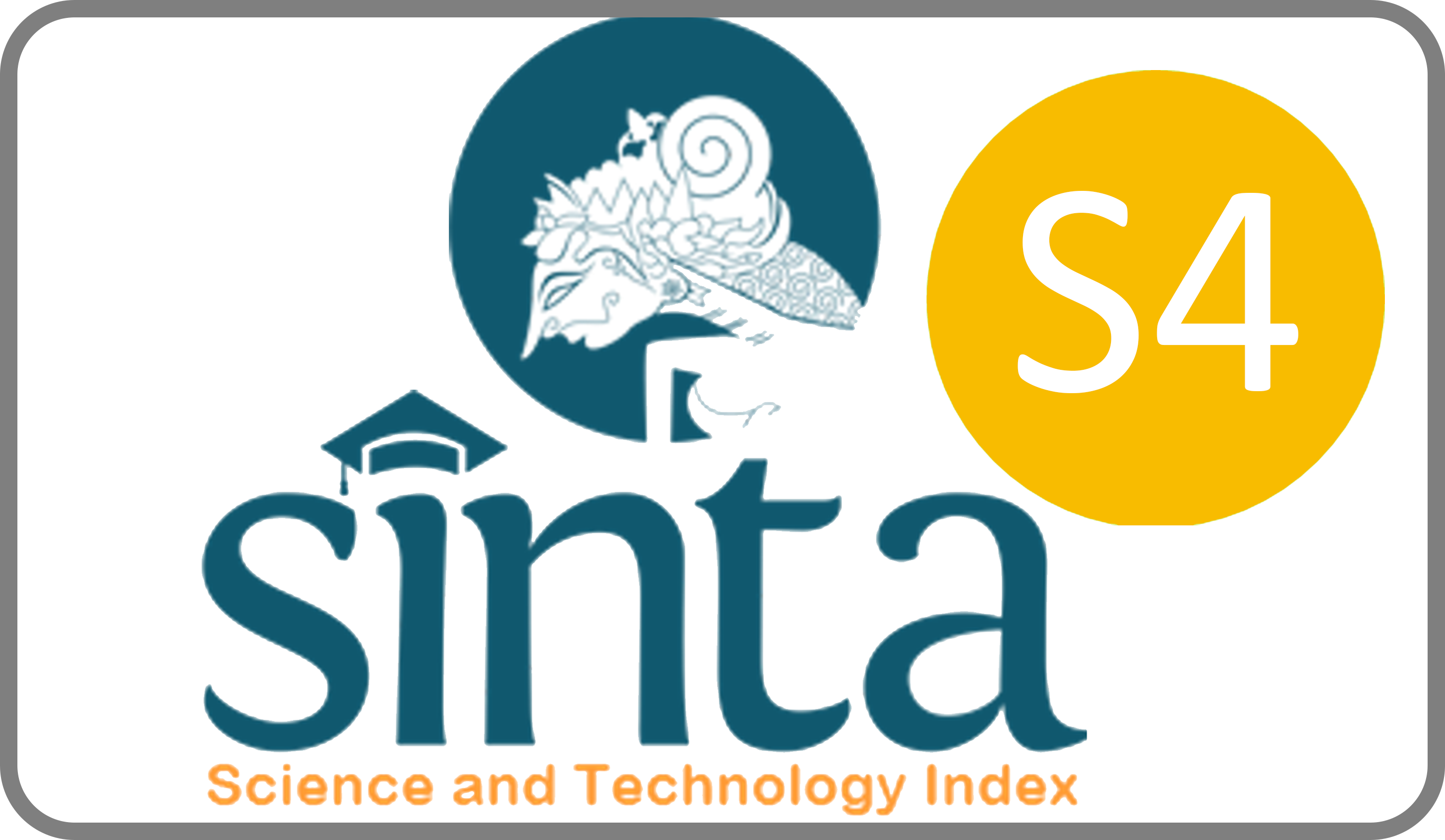KERIPIK SALAK VACUUM FRYING SEBAGAI ALTERNATIF PENGEMBANGAN PRODUK INOVATIF DI DAERAH AGROKLIMAT BANGKALAN MADURA
Downloads
Efforts to maintain the quality and storage of fruit is to process it into dry food. Fruit processing into chips needs to be technologically supported so that the quality of chips produced can be accepted by consumers. One way to produce healthy food without changing its original shape is to use vacuum frying technology. Using a vacuum frying, the result had better, the chips were not burnt, keep bright as the original colour and the vitamin content was not damaged. In this program produced salak chips with the characteristics of maximum moisture content of 9.9% ash content of 3.1 %, fat content of 24.1%, during storage for up to 6 weeks. The composition of salak chips was better with aluminium foil packaging than plastic. Salak chips produced still be the quality standards of fruit chips according to SNI 01-4306-1996, namely maximum moisture content of 22%, ash of 3% and fat of 25%.
Abstrak
Upaya mempertahankan mutu dan daya simpan buah adalah mengolahnya menjadi makanan kering. Pengolahan buah menjadi keripik perlu dukungan teknologi sehingga kualitas keripik yang dihasilkan dapat diterima konsumen. Salah satu cara untuk menghasilkan makanan sehat tanpa mengubah bentuk aslinya adalah dengan menggunakan teknologi penggorengan vakum. Penggunakan pengorengan vacuum, hasilnya akan lebih bagus, keripik tidak gosong, tetap cerah seperti warna aslinya dan kandungan vitamin dari buah olahan tidak rusak. Pada kegiatan pengabdian masyarakat ini dihasilkan keripik buah salak dengan karakteristik kadar air maksimal 9.9% kadar abu sebesar 12.5% kadar lemak 24.1% selama penyimpanan sampai 6 minggu. Komposisi keripik salak ini lebih baik dengan kemasan aluminium foil daripada kemasan plastik. Keripik salak yang dihasilkan masih memenuhi Standar mutu keripik buah menurut SNI 01-4306-1996, yaitu kadar air maksimal 22%, kadar abu maksimal 3% dan kadar lemak maksimal 25%.
Badan Standardisasi Nasional.SNI 01-4306-1996
Christian, J.H.B. 1980. "Reduced water activity”. p. 79−90. In J.H. Silliker, R.P. Elliot, A.C. Baird-Parker, F.L. Brian, J.H.B. Christian, D.S. Clark, J.C. Olson Jr., and T.A. Roberts (Eds.). Microbial Ecology of Foods. Academic Press, New York.
Enggar, E.2009.Vacum Fried Snack. [9 September 2009].
Floros, J.D. and V. Gnanasekharan. 1993. Shelf Life Prediction of Packaged Foods: Chemicals, Biological, Physical, And Nutritional Aspects. G. Chlaralambous (Ed.). Elsevier Publ., London.
Institute of Food Science and Technology. 1974. Shelf Life of Food. J. Food Sci. 39: 861−865
Nurhudaya. 2011. Rekayasa Penggorengan Vakum dan Pengemasan Keripik Durian Mentawai. Skripisi Fakultas Teknologi Pertanian, IPB, Bogor
Paramita ND. 1999. Pengaruh Suhu dan Waktu Penggorengan Hampa (Vacuum Frying) Terhadap Sifat Fisik dan Organoleptik Keripik Sawo (Achras Sapota, L.). Skripisi Fakultas Teknologi Pertanian, IPB, Bogor
Prabhakar, J.V. and B.L. Amia. 1978. Influence of Water Activity on The Information on Monocarbonyl Compounds in Oxidizing Walnut Oil. J. Food Sci. 43: 1.839−1.843.
Siregar, H.P., D.D. Hidayat, dan Sudirman. 2004. Evaluasi Unit Proses Vacuum Frying Skala Industri Kecil dan Menengah. hlm. I-4-1 s.d. I-4-5.
Sudaryono, T., S, Purnomo dan M. Soleh. 1993. Distribusi Varietas dan Prakiraan Wilayah Pengembangan Salak. Penel. Hort. 5(2): 1-14.
Sudjud HR. 2000. Mempelajari Pengaruh Suhu dan Waktu Penggorengan Hampa Terhadap Sifat Fisik dan Organoleptik Keripik Buah Cempedak (Artocarpus Integer (Thunb) Merr). Skripisi Fakultas Teknologi Pertanian, IPB, Bogor
Sulcan M dan Endang N W.2007. Keamanan Kemasan Plastik dan Styrofoam. Semarang
Syarief, R., S. Santausa dan S.B. Isyana 1989. Buku dan Monograf Teknologi Pengemasan Pangan. PAU. IPB, Bogor
JLM by Unair is licensed under a Creative Commons Attribution-ShareAlike 4.0 International License.
1. The journal allows the author to hold the copyright of the article without restrictions.
2. The journal allows the author(s) to retain publishing rights without restrictions
3. The legal formal aspect of journal publication accessibility refers to Creative Commons Attribution Share-Alike (CC BY-SA).
4. The Creative Commons Attribution Share-Alike (CC BY-SA) license allows re-distribution and re-use of a licensed work on the conditions that the creator is appropriately credited and that any derivative work is made available under "the same, similar or a compatible license”. Other than the conditions mentioned above, the editorial board is not responsible for copyright violation.


















